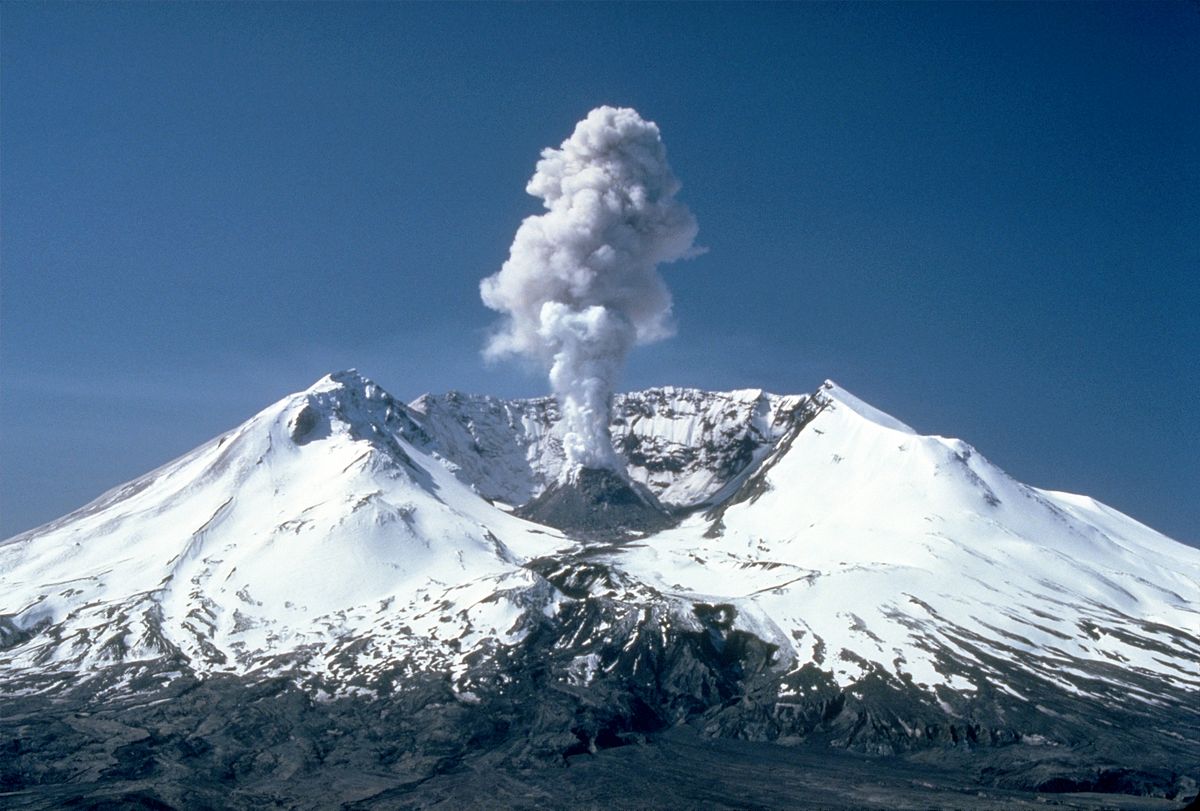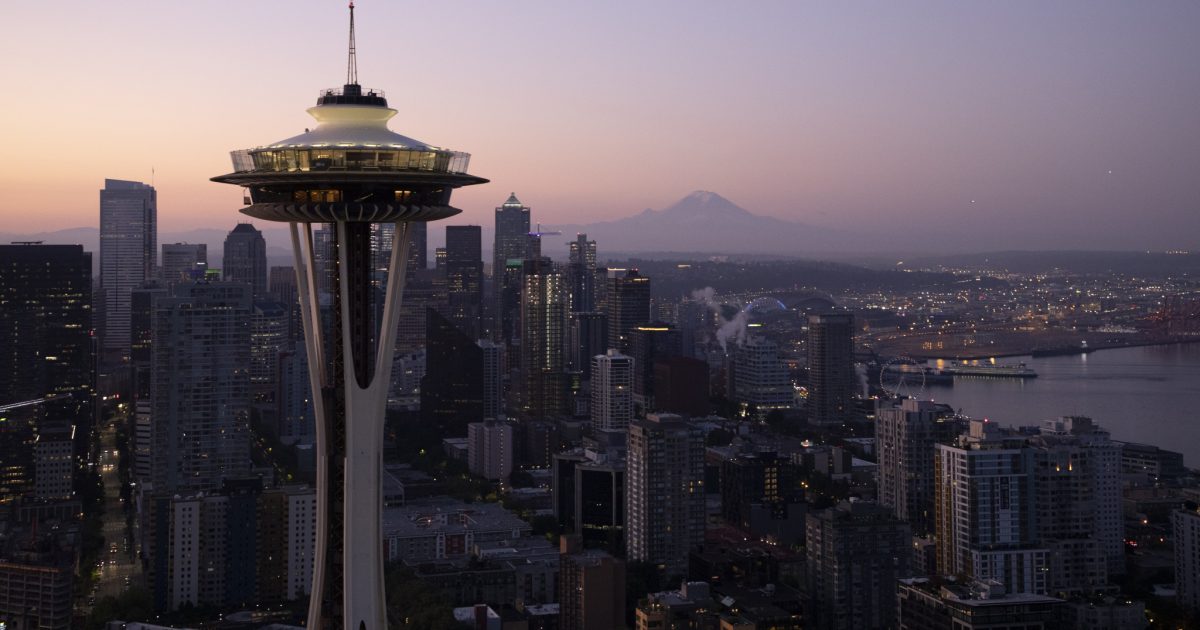
Mount St. Helens is undoubtedly one of the most fascinating and captivating landmarks in the United States. Located in Washington State, this active stratovolcano has a rich history and continues to be a source of awe and wonder for visitors and scientists alike. Formed thousands of years ago, Mount St. Helens gained global attention when it erupted in 1980, causing significant destruction and forever altering the landscape.
In this article, we will explore 18 intriguing facts about Mount St. Helens, ranging from its geological significance to the impact of its eruption on the surrounding ecosystem. Whether you’re a nature enthusiast, a geology buff, or simply curious about natural landmarks, these facts will provide you with a deeper understanding of Mount St. Helens and its place in our world.
Key Takeaways:
- Mount St. Helens’ 1980 eruption was a devastating event, but it also provided valuable insights into volcanic processes and the resilience of nature, shaping our understanding of volcanic activity and ecological recovery.
- The eruption of Mount St. Helens had a global impact, showcasing the power of nature. It continues to be a popular destination for outdoor enthusiasts, offering a unique blend of beauty and danger.
The eruption of Mount St. Helens on May 18, 1980, was one of the most destructive volcanic events in the history of the United States.
The eruption resulted in the tragic loss of 57 lives and caused extensive damage to the surrounding landscape.
The eruption caused the entire north face of the mountain to collapse, leading to the formation of the largest landslide in recorded history.
This massive landslide rapidly released pressurized gases and triggered a devastating lateral blast that swept across the landscape.
The eruption of Mount St. Helens released approximately 24 megatons of thermal energy, equivalent to 1,600 times the atomic bomb dropped on Hiroshima.
It also spewed out a colossal amount of volcanic ash, which traveled hundreds of miles and affected air travel and visibility in several states.
Prior to the 1980 eruption, Mount St. Helens stood at an elevation of 9,677 feet (2,950 meters) and was one of the most symmetrical volcanoes in the world.
The eruption drastically altered the mountain’s shape, reducing its height by 1,300 feet (396 meters).
Mount St. Helens continues to be one of the most active and monitored volcanoes in the United States.
It is part of the Pacific Ring of Fire, a region known for its intense volcanic and seismic activity.
The landscape around Mount St. Helens has been gradually recovering since the eruption, with new plant and animal life colonizing the devastated areas.
This remarkable ecological recovery serves as a testament to the resilience of nature.
Mount St. Helens National Volcanic Monument was established in 1982 to preserve and study the aftermath of the eruption.
The monument offers visitors a chance to witness the volcanic landscape up close and learn about the geological processes that shaped it.
Mount St. Helens is part of the Cascade Range, a volcanic arc stretching from northern California to southwestern British Columbia.
It is one of the youngest and most active volcanoes in the Cascade Volcanic Arc.
The Native American names for Mount St. Helens include Lawetlat’la (Klickitat) and Louwala-Clough (Cowlitz).
These names reflect the significance and cultural importance of the volcano to indigenous communities.
Prior to the 1980 eruption, Mount St. Helens was a popular recreational area, attracting hikers, skiers, and mountaineers.
However, access to the mountain is now restricted due to ongoing volcanic activity.
The 1980 eruption of Mount St. Helens provided scientists with valuable insights into volcanic processes and eruption forecasting.
It significantly advanced our understanding of how volcanic systems behave and how to mitigate the risks associated with them.
The ash cloud produced by the eruption of Mount St. Helens circled the Earth within two weeks, resulting in vivid sunsets across the globe.
The fine ash particles scattered sunlight, creating stunning red and orange hues in the sky.
Mount St. Helens is a popular destination for outdoor enthusiasts, offering a variety of recreational activities such as hiking, camping, and wildlife viewing.
Visitors can explore the trails and viewpoints to experience the beauty and power of this natural wonder.
Mount St. Helens is home to a diverse range of flora and fauna, including elk, black bears, cougars, and a variety of bird species.
The surrounding wilderness provides habitat for numerous species to thrive in this unique volcanic landscape.
The 1980 eruption of Mount St. Helens caused a temporary shutdown of air traffic in the region due to the hazardous ash cloud.
It highlighted the challenges posed by volcanic eruptions to aviation and the need for improved monitoring and communication systems.
Mount St. Helens has experienced smaller eruptions and volcanic activity since the major eruption in 1980.
These ongoing volcanic events serve as a reminder of the dynamic nature of the volcano and the potential for future eruptions.
Scientists continue to closely monitor Mount St. Helens, utilizing advanced technology to detect any signs of volcanic unrest.
By studying the volcano, they hope to gain a better understanding of its behavior and improve volcanic hazard assessment and early warning systems.
Mount St. Helens stands as a powerful reminder of the immense forces that shape our planet and the importance of respecting and studying volcanic activity.
Its dramatic eruption and subsequent recovery have left an indelible mark on the landscape and the scientific community.
Conclusion
In conclusion, Mount St. Helens is a fascinating and powerful natural landmark that has left a lasting impact on the surrounding area and the world. With its explosive eruption in 1980 and subsequent regeneration, it has become a symbol of resilience and natural processes. The mountain continues to attract visitors and scientists alike, offering a unique opportunity to witness the forces of nature at play.
FAQs
1. When did Mount St. Helens erupt?
Mount St. Helens erupted on May 18, 1980.
2. How tall is Mount St. Helens?
Before the eruption, Mount St. Helens stood at an impressive height of 9,600 feet (2,926 meters). However, after the eruption, the summit was reduced to 8,363 feet (2,549 meters) above sea level.
3. How many people died in the eruption?
The eruption of Mount St. Helens claimed the lives of 57 people, including volcanologists, lodge owners, campers, and loggers.
4. Is it safe to visit Mount St. Helens?
Yes, it is generally safe to visit Mount St. Helens. The area has been designated as a national monument, and precautions are in place to ensure visitors’ safety. However, it is important to follow any guidelines or restrictions put in place by park officials.
5. Can you hike to the summit of Mount St. Helens?
Yes, it is possible to hike to the summit of Mount St. Helens. However, permits are required, and hikers should be prepared for a challenging trek that includes steep slopes and loose volcanic ash.
6. Can Mount St. Helens erupt again?
Yes, although Mount St. Helens is currently in a period of volcanic quiescence, it is considered an active volcano and has the potential to erupt again in the future.
7. What is the current status of Mount St. Helens?
Mount St. Helens is currently monitored by the United States Geological Survey (USGS) and is considered to be in a state of volcanic unrest. The volcano’s activity is closely monitored, and any signs of increased volcanic activity would be reported and responded to accordingly.
Mount St. Helens' captivating history and ongoing recovery make it a must-see destination for nature lovers and adventure seekers alike. If you're eager to learn more about this incredible volcanic landmark, don't miss our other in-depth articles that delve into the mountain's most amazing facts and interesting details. From the cataclysmic eruption that reshaped the landscape to the resilient ecosystems that have emerged in its wake, there's always more to discover about Mount St. Helens. So, pack your bags, grab your hiking boots, and get ready to explore one of the Pacific Northwest's most awe-inspiring natural wonders!
Was this page helpful?
Our commitment to delivering trustworthy and engaging content is at the heart of what we do. Each fact on our site is contributed by real users like you, bringing a wealth of diverse insights and information. To ensure the highest standards of accuracy and reliability, our dedicated editors meticulously review each submission. This process guarantees that the facts we share are not only fascinating but also credible. Trust in our commitment to quality and authenticity as you explore and learn with us.


